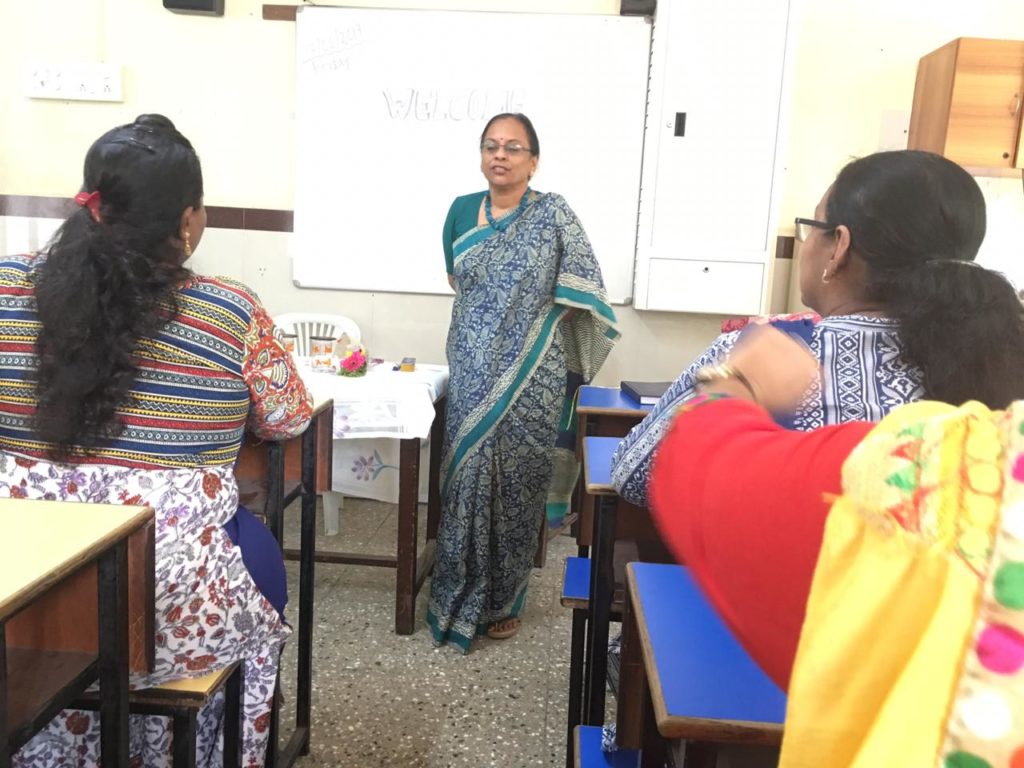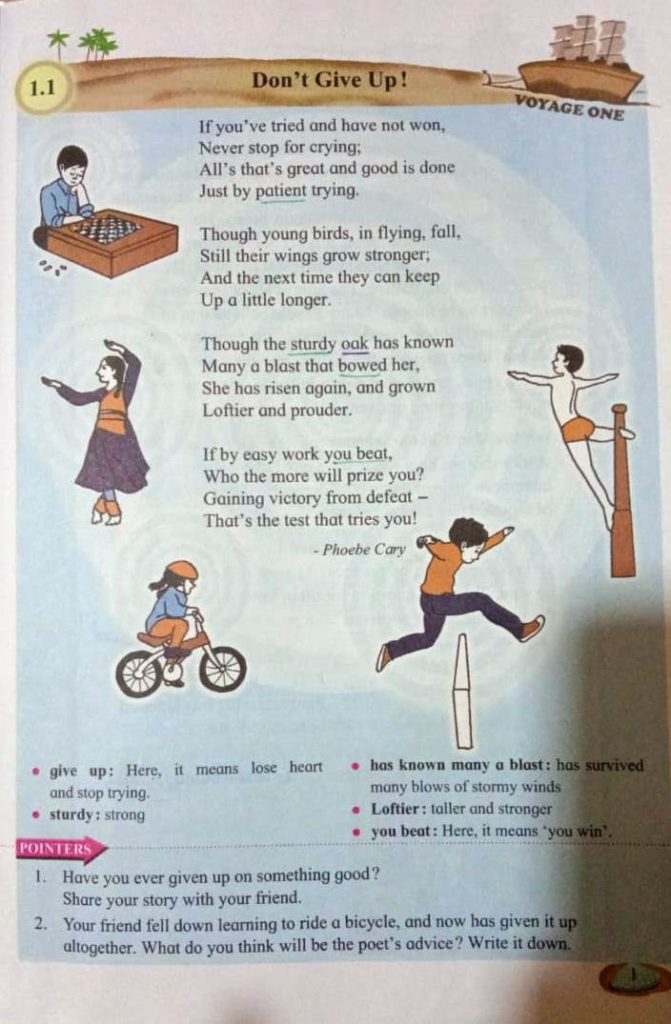As an English teacher, I always found poems very fascinating at a personal level but when it comes to doing it with students, I have had a tough time in designing strategies to teach poems to the students because unlike prose, poems are not self-explanatory. It is a form of literature wherein ideas are presented in an artistic way ( using devices, rhyme scheme, imagery). This nature of poems always puts me in a dilemma as to, how do I convey the essence of the poem to my students? For instance – Past, Present, Future a poem by Emily Bronte(std. VII textbook) is a metaphorical one where the very abstract idea of ‘time’ is indirectly compared with the natural elements.
As Sharon School has a culture of adopting new strategies every year, this year also, I had the pleasure of learning a new strategy to teach poems from Mrs Usha Pandit (writer, educationist, teacher trainer and author of the textbook series Empowering English). I am grateful to the management for arranging the workshop.

Mrs Usha Pandit beautifully demonstrated how a poem can be critically appreciated in a holistic manner without killing its beauty. According to this strategy, a poem can be understood by closely looking at its title and unpacking the symbolical meaning of word clusters, and other devices used throughout the poem. While using this strategy with my group in the workshop with Ms Pandit, I was amazed to see how the words used in the poem can easily lead us to the hidden meaning and this hidden meaning of a poem can easily lead us to the theme of the poem. This made me realize how inappropriate my ways of dissecting the poem line by line were. It was undoubtedly ruining its beauty and making the poem difficult and boring at the same time for the students. For me, the takeaway lesson from this workshop was not how to analyse a poem but the skill to analyse any poem. I really wanted to use this strategy with my students with the sole intention of passing on this skill and giving them a life long learning experience.
I used this strategy to teach the poem Don’t Give Up by Phoebe Cary with my std. VI students last month. When I started doing the poem with the students they took some time to understand the strategy and I was quite uncertain what their response may be and if they would be able to understand the motive behind doing a poem this way. But to my surprise, the responses from the students were very good and relevant. For instance, while introducing the poem I asked them what came to their mind looking at the title. Their responses were, “always keep trying”, “work hard”, “be positive”, “don’t lose hope” so on and so forth. For me, this was a good sign confirming that students are capable of reading poems symbolically as well.

As we proceeded with the poem and started analyzing the word clusters, I tried to draw their attention to the pattern of how words were placed in the poem and how these words add meaning to the poem. This gave them the chance to think about how these words have hidden meanings that contribute to the theme of the poem. For instance, while looking at words like ‘young birds,oak tree, patient,trying’ from the poem they were easily able to infer the implicit message that, if we keep on trying patiently without accepting defeat like young birds and the oak tree that bends but never breaks, we will surely achieve our goal. Their ability to unearth the theme of the poem with the help of the word clues present in the poem was really an eye-opener for me. This really made my job very easy as I didn’t have to labour hard to make students appreciate the poems. Interestingly, I didn’t have to teach them poetic devices separately, as children looking for poetic devices while critically analyzing the poem.
Discussing a poem with the students using this new way was really satisfactory and it served two purposes. First, students were inquisitive and were actively involved in deciphering the poem themselves. It kept them cognitively challenged. Second, I got an opportunity to improve my facilitation skills and I think I have taken one small step towards putting my students on a path of lifelong learning.
Contributed by
Vinita Pal
English Teacher


Wow! Mam. Yes, we need to be innovative in our strategies and evoke thinking skills, pre knowledge connections, real life experiences to facilitate learning.
Truly agreed mam, You revealed the secret of teaching poem,I also facing the same problem while teaching poem to students. I was just conveying the meaning of the poem line by line .Thank you so much mam for sharing the strategies which all should apply in their teaching
Thank you mam
Stay away from teachers who slap you down or reject rhyme and want only free verse.
Read lots and lots of poets, real poets and be yourself.